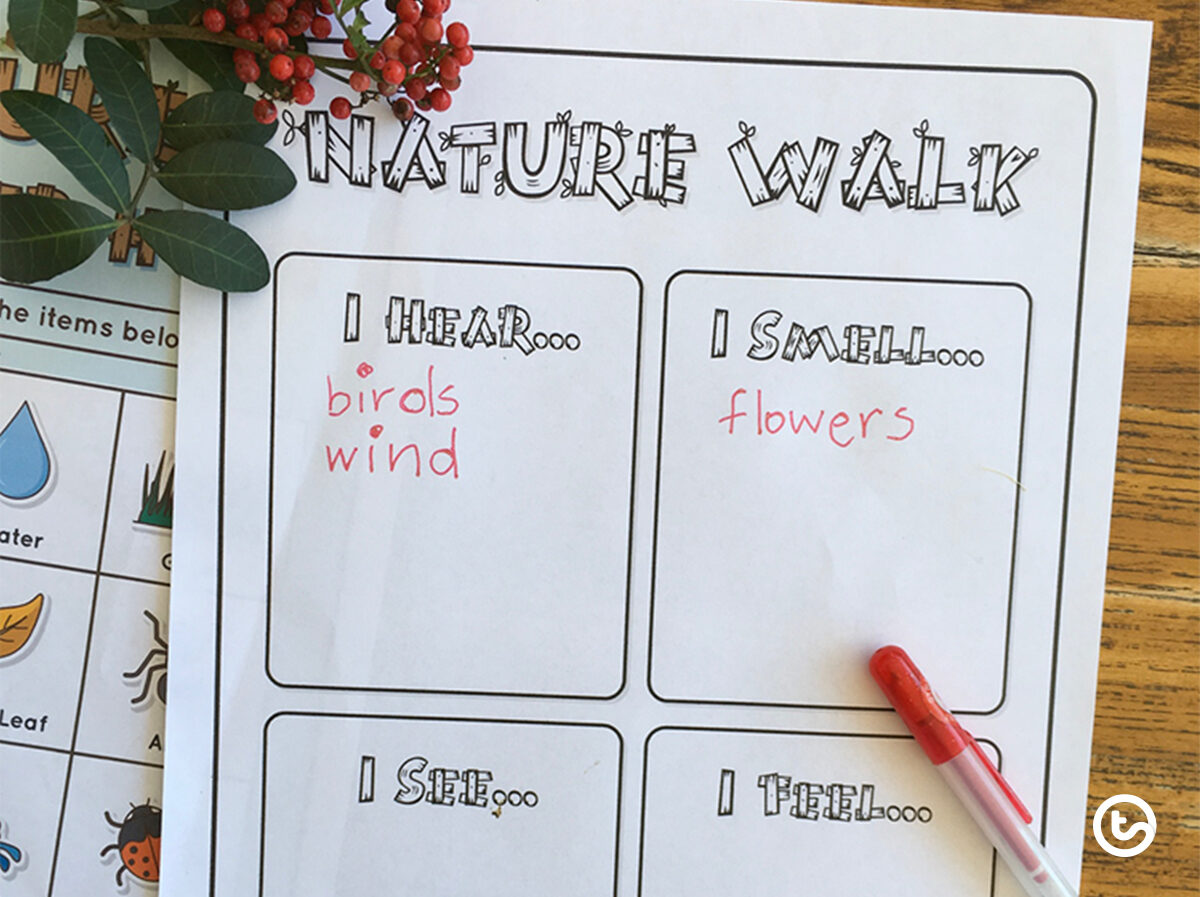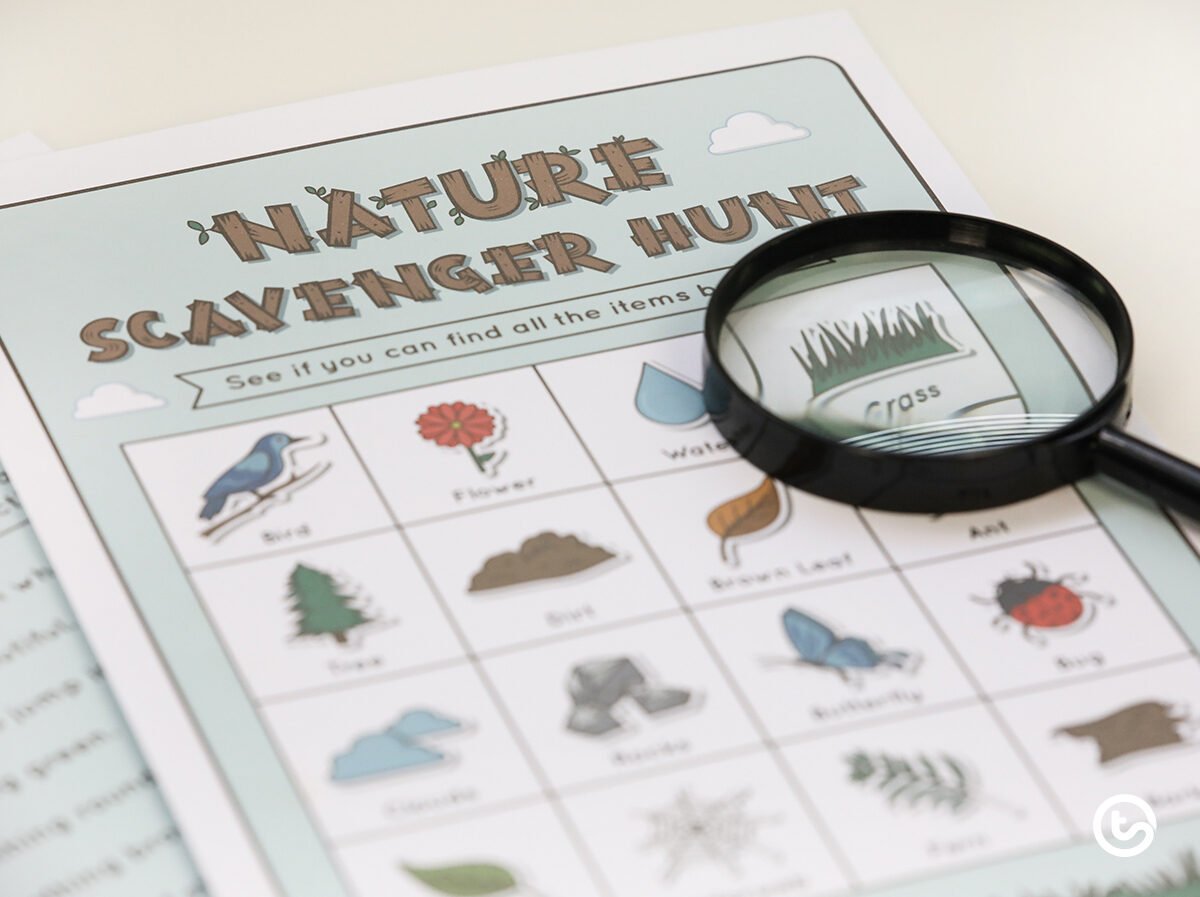If there’s one thing COVID has allowed for, it’s more time outside the classroom for teachers and students both with more districts offering the flexibility to teach out on the school lawn. Thinking about adding nature walk activities to your lesson plan to get your kids up and moving and outside of the stuffy classroom?
Nature walks are educational activities for kids, but they’re also pretty darn fun for teachers and students alike. So we pulled together some nature walk activities for children that will actually teach them a thing or two while making for an enjoyable trip too!
You’ll find printables to incorporate into your nature walk lesson plan plus ideas on how to add unexpected education elements for elementary schoolers!
Nature Walk Activities for Children
Nature Walk Senses Activity
If you are teaching your pre-K or kindergarten students about the five senses, nature walking outside is a great addition to your lesson plan as it allows them to listen to different sounds, smell different and new smells, feel the wind and sun, and so on.
For older kids, a senses activity to do on a nature walk might include writing down what they heard, smelled, saw, and felt as part of their scientific exploration.

Man-Made or Natural?
When you’re taking a nature walk with children, you’re bound to see plenty of natural elements, but what about all the man-made ones? Challenge your younger learners in kindergarten and first grade to spot things that are man-made along the way!
Nature Scavenger Hunt
Use our free printable Nature Scavenger Hunt Grid, and go nature walking with a mission. With the scavenger hunt sheet to guide them, children search for different items, marking down all of the things they have found along the way. If you have a classroom camera — or even your smartphone — you can snap photos of their discoveries to include in a classroom book.
Create Nature Boxes
Cut cardboard egg cartons in half, and hand out to each child. Encourage your students to find items from the free Scavenger Hunt grid while you’re out on your nature walk!
Your students can keep their treasures in their egg crates, and they can work on their fine motor skills by cutting out and coloring in the items from their scavenger hunt grid to label their egg crate “nature boxes.”
Practice Finding Letters
Look for letters in the environment or make letters using sticks and leaves! You could also sit down and play a game of ‘I Spy’ using the letters of objects. This is a great way to build on your children’s knowledge of the alphabet.
To take it one step further, print out a letter match sheet and encourage your students to draw a picture of where they spotted the letter in nature. For example, if they spotted an S on a stop sign, they could draw a stop sign in the box. Students can then share their findings with a partner when the class returns inside.
Hunt for Shapes in Nature
Challenge the children in your class to look for different shapes in the environment. How many circles, triangles or other shapes can they see? Add an extra layer of fun with a shape scavenger hunt worksheet that students can color in when they’ve spotted each shape!
Scavenger Hunt Checklist
Download our Scavenger Hunt Checklist template, and let the children explore. In this resource, there are 10 fun activities all on one page! Encourage the students to read the activities by themselves (if they can).
Mapping
Practice mapping skills and support spatial thinking by following your nature walk with a mapping activity. Students can draw a map of the playground or the backyard of the school, plotting all or a portion of the journey you took outside as a class.
Create a Journey Stick
Use double-sided sticky tape on a piece of cardboard, and during the nature walk children collect different items to stick on their “journey stick.”
Play Nature Walk Bingo
Print out nature bingo cards and explore nature while your students keep their eagle eyes open for the items on their cards!
Make Bark Art
Check the ground for bark that’s fallen off trees or the trees for any bark that’s peeling off for a bark art project! The bark can be brought back to the classroom for students to examine the natural designs with a magnifying glass and recreate them on paper.








Loved these ideas for just getting my indoor grandkids out and learning!
Fantastic! Thanks for the lovely feedback Sherry!